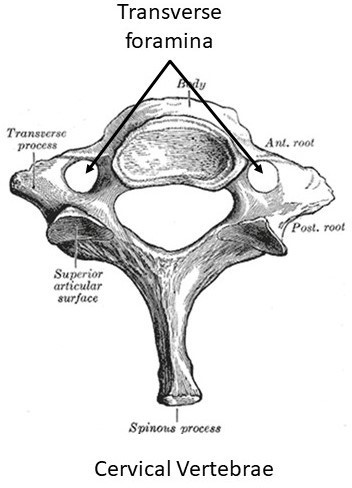What connects bone to bone?
None of these.
Ligaments.
Tendons.
Syndesmosis.
The Correct Answer is B
A ligament is a type of fibrous connective tissue that connects bone to bone. It usually serves to hold structures together and keep them stable.
For example, the anterior cruciate ligament (ACL) connects the femur and the tibia in the knee joint.
Choice A is incorrect because none of these is not a valid answer.
Choice C is incorrect because tendons are fibrous connective tissues that connect muscle to bone.
For example, the Achilles tendon connects the gastrocnemius muscle to the calcaneus bone in the ankle.
Choice D is incorrect because syndesmosis is a type of fibrous joint that connects two bones by a ligament or an interosseous membrane.
For example, the distal tibiofibular joint is a syndesmosis joint.
Nursing Test Bank
Naxlex Comprehensive Predictor Exams
Related Questions
Correct Answer is ["Occipital bone"]
Explanation

The occipital bone is a flat, unpaired bone located at the posterior aspect of the skull, forming the lower part of the back of the head.
It features several surface landmarks, including the external occipital protuberance, which serves as an attachment site for muscles and ligaments.
The occipital bone also contains several foramina, including the foramen magnum, which allows the spinal cord to pass through and connect to the brain.
The occipital bone is an important site for the attachment of muscles involved in head movement and posture.
Correct Answer is D
Explanation
The transverse foramina are openings in the transverse processes of the cervical vertebrae that allow the passage of the vertebral arteries and veins.
They are not found on any other vertebrae.

Choice A is incorrect because spinous processes are bony projections on the posterior aspect of all vertebrae that serve as attachment sites for muscles and ligaments.
Choice B is incorrect because transverse processes are lateral projections on all vertebrae that serve as attachment sites for muscles and ribs.
Choice C is incorrect because costal facets are articular surfaces on the thoracic vertebrae that articulate with the heads of the ribs.
They are found on all thoracic vertebrae except T11 and T123.
Whether you are a student looking to ace your exams or a practicing nurse seeking to enhance your expertise , our nursing education contents will empower you with the confidence and competence to make a difference in the lives of patients and become a respected leader in the healthcare field.
Visit Naxlex, invest in your future and unlock endless possibilities with our unparalleled nursing education contents today
Report Wrong Answer on the Current Question
Do you disagree with the answer? If yes, what is your expected answer? Explain.
Kindly be descriptive with the issue you are facing.
